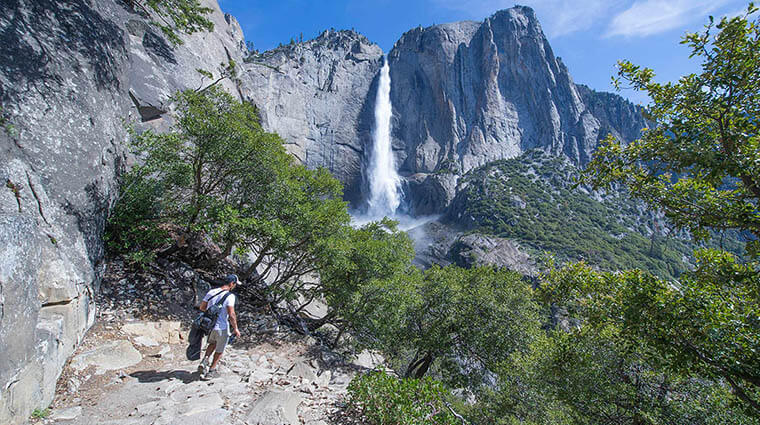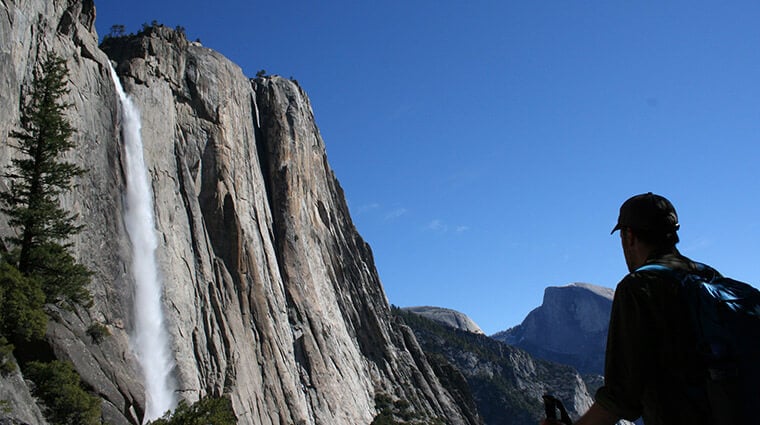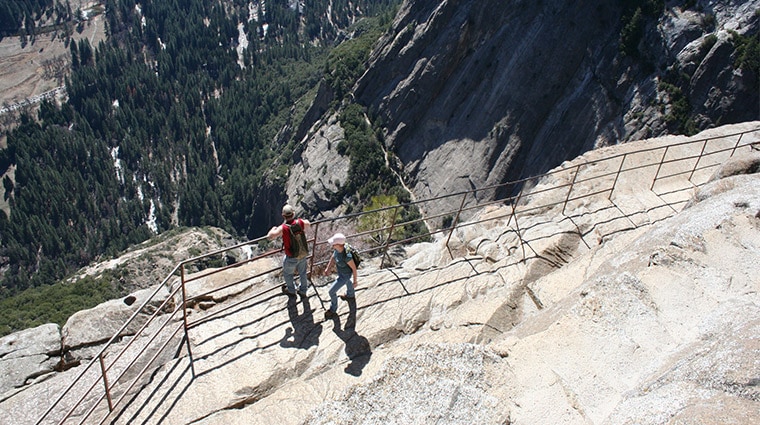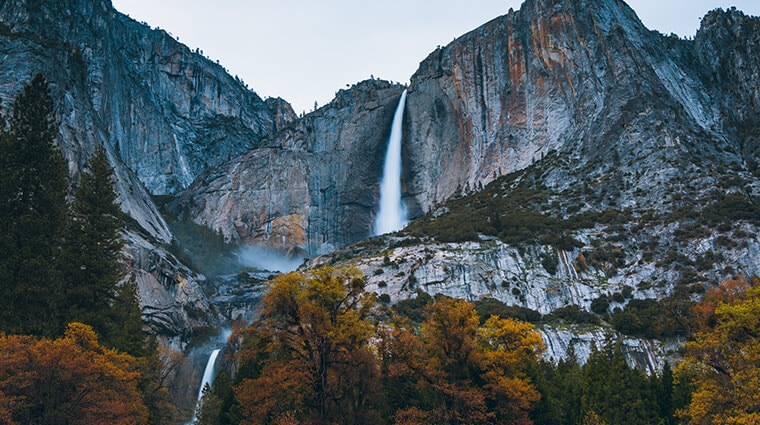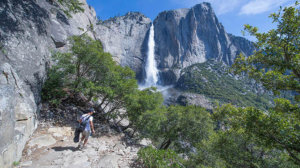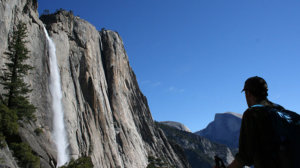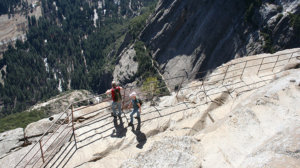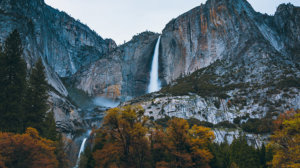
Upper Yosemite Falls Hike
Upper Yosemite Falls Hike
Yosemite Valley
Yosemite Falls, Yosemite Village, CA, United States
Launch Virtual Tour
Overview
Where can you go in Yosemite National Park for some of the best views afforded by nature? Look no further than one of Yosemite oldest historic trails (built 1873 to 1877), the Upper Yosemite Fall Trail. It leads to the top of North America’s tallest waterfall 2,425 feet (739 m) above the Valley floor.
A word of caution: do not stray off the marked path, as you will find steep drops adjacent to the trail.
Also, this trail is a strenuous (yes, really!) trail and should only be attempted with plenty of water. The best months to hike it are anytime when there is water in Yosemite Falls, typically April-June, although with the right conditions it can also be very nice in late fall (October-November) or early spring (February – March) depending on conditions. If there is no water in the falls during your planned trip a fantastic alternative in terms of views and difficulty would be the Mist Trail.
Yosemite Falls is actually the collective name for three separate falls: Upper Yosemite Fall (1,430 feet), the middle cascades (675 feet), and Lower Yosemite Fall (320 feet).
Enjoy spectacular views from Columbia Rock located one mile (and dozens of switchbacks) from the trailhead. If you make the one-mile, 1,000-foot climb (via dozens of switchbacks) to Columbia Rock, you will be rewarded with spectacular views of Yosemite Valley, Half Dome and Sentinel Rock.
Upper Yosemite Fall Hike Suggestions
Good sun exposure makes this hike a welcome option for hiking in the fall and winter when the temperatures are relatively cool.
In the summer, when temperatures are already high, however, a careful plan for dealing with the heat is essential. Each summer there are numerous first aid response calls to this trail related to dehydration. Be sure to bring enough drinking water with you for this hike. It is recommended to have at least 3-4 liters of water per person available when the summer temperatures peak. Approaching the trail pre-dawn allows you to get a bunch of the steep uphill done in the cool of the morning, and you’ll have more of the trail to yourself too.
When you’re ready to hit the trail for the better part of a day, it’s hard to beat the 7.6-mile (round-trip) Upper Yosemite Fall hike for top-notch views of breathtaking scenery, challenging climbs, and memories to last a lifetime.
And, once you’ve conquered the Upper Yosemite Fall hike, be sure to check out the easy, one-mile Lower Yosemite Falls trail, which is perfect for pets and families with young children.
Ready to see what Yosemite Falls looks like? Check out this incredible live view via webcam, courtesy of Yosemite Conservancy donors.
If the Upper Yosemite Falls hike has you hooked on waterfalls, don’t fret. There are plenty more to check out, including Bridalveil Fall, another of the most famous falls in Yosemite Mariposa County.
